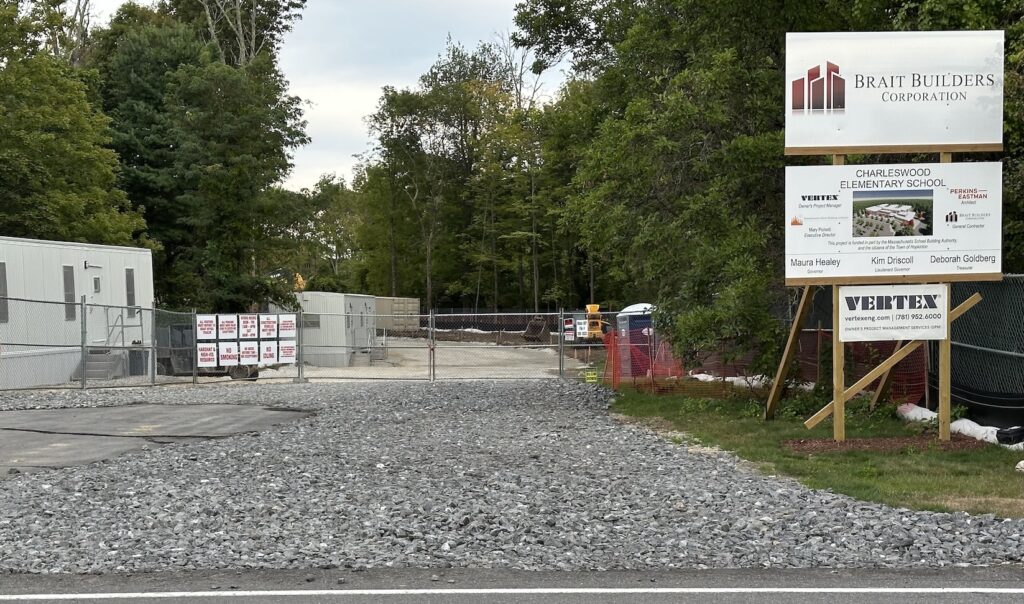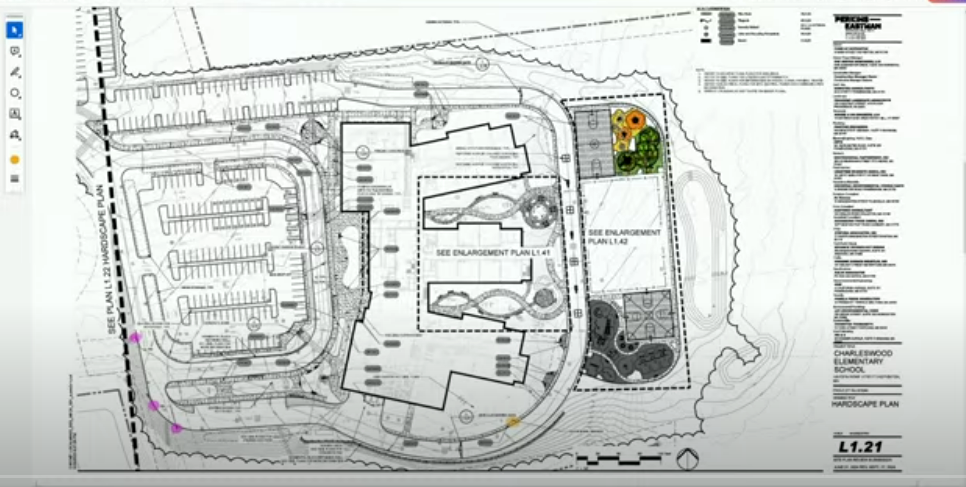A review of changes to the Massachusetts School Building Authority reimbursement process and another look at a traffic study dominated Tuesday’s Elementary School Building Committee meeting.
The MSBA reacted to changes in the Massachusetts Energy Code involving its shifted focus from energy reduction measures to heating and cooling demand reduction, or Thermal Energy Demand Intensity (TEDI).
Also, reimbursement for having electric vehicle-ready parking rose to 20% for businesses and schools.
Jeff D’Amico, Vertex project director, noted there is a push for electrification of buildings on new projects, a direction toward which Hopkinton already is working.
To help communities meet codes, the MSBA issued an advisory showing its reimbursement increasing from 2% to 3% and an additional 1% possible for meeting certain LEED (Leadership in Energy and Environmental Design) criteria.
Dan Colli, Perkins Eastman project manager, said this project would have a “passive house modeling” approach rather than TEDI because there are still a lot of questions about the accuracy of how TEDI works.
Projects must earn points in several categories such as low-emitting materials, an indoor air quality assessment and materials ingredients. Colli said the latter LEED points can be earned by collecting 20 environmental product declarations (EPD) and health product declarations (HPD) from five manufacturers.
He likened these documents to labels with food ingredients listed.
D’Amico explained that the Elmwood replacement project had its preferred schematic report approved in June and expects MSBA approval in October for its schematic design. That puts the district in a position where it can follow the former program or try to earn extra points with the new one.
Colli said he is confident the group can achieve the path with more points to get more reimbursement.
D’Amico added that Hopkinton already has a “sustainable goal and is forward-thinking.”
ESBC member Mike Shepard asked whether the reimbursement would cover the costs of the energy-saving measures. “We want to do the right thing, but not if it costs more than the regular thing,” he said.
Colli responded that extra points translate into more reimbursement that will cover the costs.
Some items are ineligible for reimbursement from MSBA and include legal fees, off-site improvements, building permits, financing costs and more.
In addition, caps are set for things like construction and owner’s project manager costs.
Prior to the exclusions, the reimbursement rates would range from 48.645% to 49.64%. However, the actual rate is closer to 25% to 30% when those factors are put in, according to D’Amico.
D’Amico pointed out the proposed Elmwood School has less than 1,000 square feet of space that is considered “ineligible” by the MSBA.
He said discussions still need to happen about how much in contingencies should be set aside. D’Amico said putting extra in reserve does not mean it will be used. Rather, it is a way to avoid having to return to Town Meeting seeking additional funds following an initial allocation, he noted.
A more specific project budget should be available by the end of August, D’Amico added, with an end date in October.
“Everybody wants to know the final answer, but it’s a process, and you guys are on a journey,” D’Amico said to committee members. “You’ve made decisions at every meeting that affect the cost. We’re going to see where all the decisions shake out.”
Traffic study reviewed
In other business, Vinod Kalikiri from VHB reviewed the traffic study data, noting factors like Hopkins School’s start and dismissal times changing to correspond with the middle and high schools as it adds Grade 6.
Also, the proposed new school would have Grade 4 (in addition to Grades 2 and 3), so the traffic was reassigned there. All analysis included enrollment projections for 10 years, Kalikiri said, and was done on “typical days,” without detours or road closures.
He said improvements are needed on Hayden Rowe Street at the driveways at Marathon School and the proposed new school.
Kalikiri highlighted recommendations like putting a traffic control signal at the Marathon driveway and having right turns only coming out of the proposed school’s driveway.
The existing turn lane near Marathon could be extended from 175 feet to 400 feet, he said. Other recommendations are a signalized crosswalk at Marathon (operated by a push button), an internal connection between the two schools to provide flexibility for parents with children at multiple grade levels, and “signal ahead” signs traveling north and south.
Kalikiri said the study showed the times with the most traffic did not correspond with school-related start and closing times.
ESBC member Bill Flannery said a resident spoke to him earlier in the day about how long it took to get from Hayden Rowe Street to downtown.
“I suspect it had more to do with the downtown corridor issue going on than what you are showing here [in the presentation],” Flannery said.
Chris Eberly, Vertex senior project manager, said the challenge is not the volume of traffic on the road, but rather the perception of frequent stopping because of people turning and traffic lights.
“It’s slowing them down because you expect the road to be free-flowing,” Eberly said. “Instead, someone 20 cars in front of you is trying to make a left turn, and they have nowhere else to go.”
Added Eberly: “The interventions proposed are specifically to address that aspect of it.”
ESBC chair Jon Graziano said the perception reinforces the importance of messaging to the public.
“What you are describing is a world this town has not lived in for several years,” Graziano said, noting there had been utility work on Hayden Rowe Street, closing sections of it.
“People feel Hayden Rowe is a mess at times that have nothing to do with schools … like 1 p.m. in the summer,” Graziano added.
The next public forum on the proposed new school is Aug. 10, with other ESBC meetings on Aug. 15, 22 and 29. The ESBC might meet with the School Committee on Aug. 24 as well.



















0 Comments